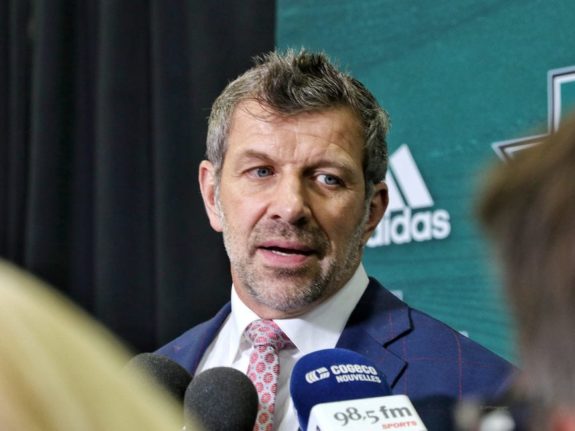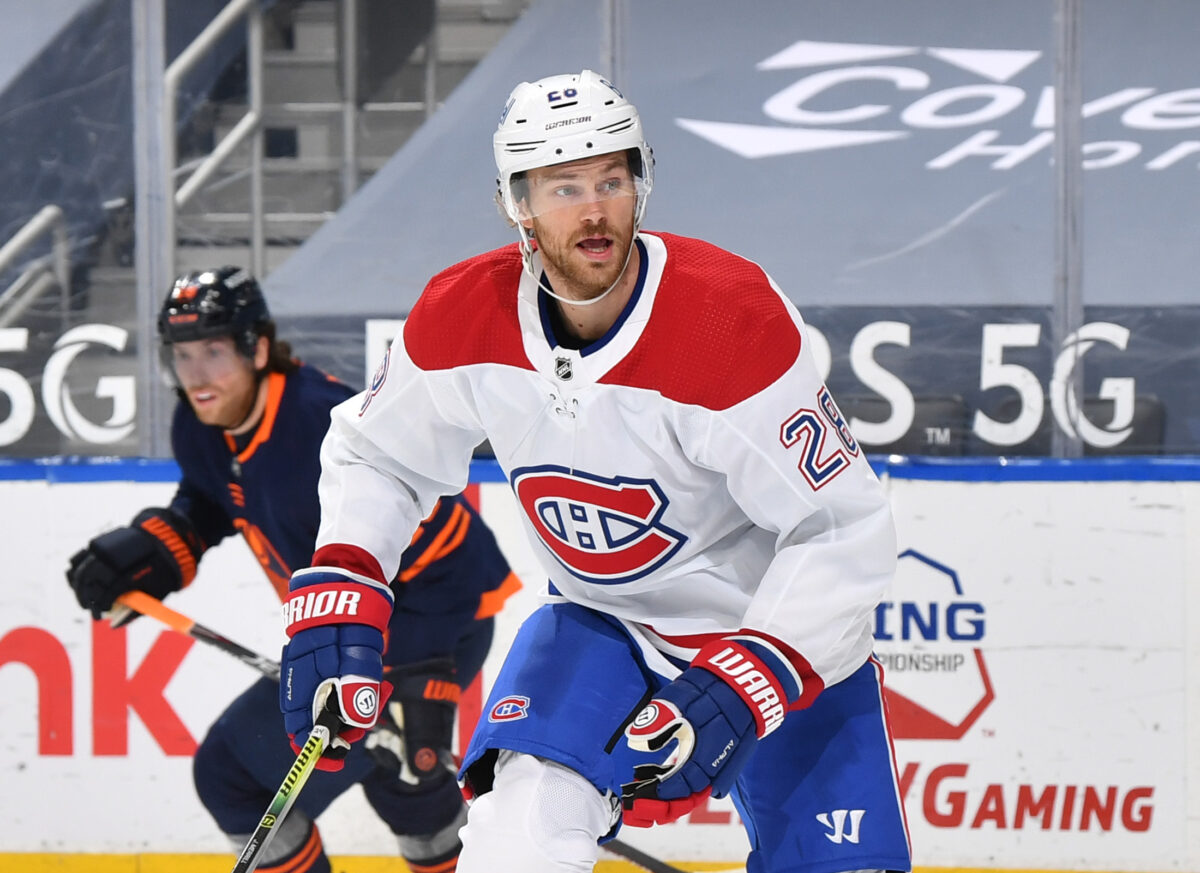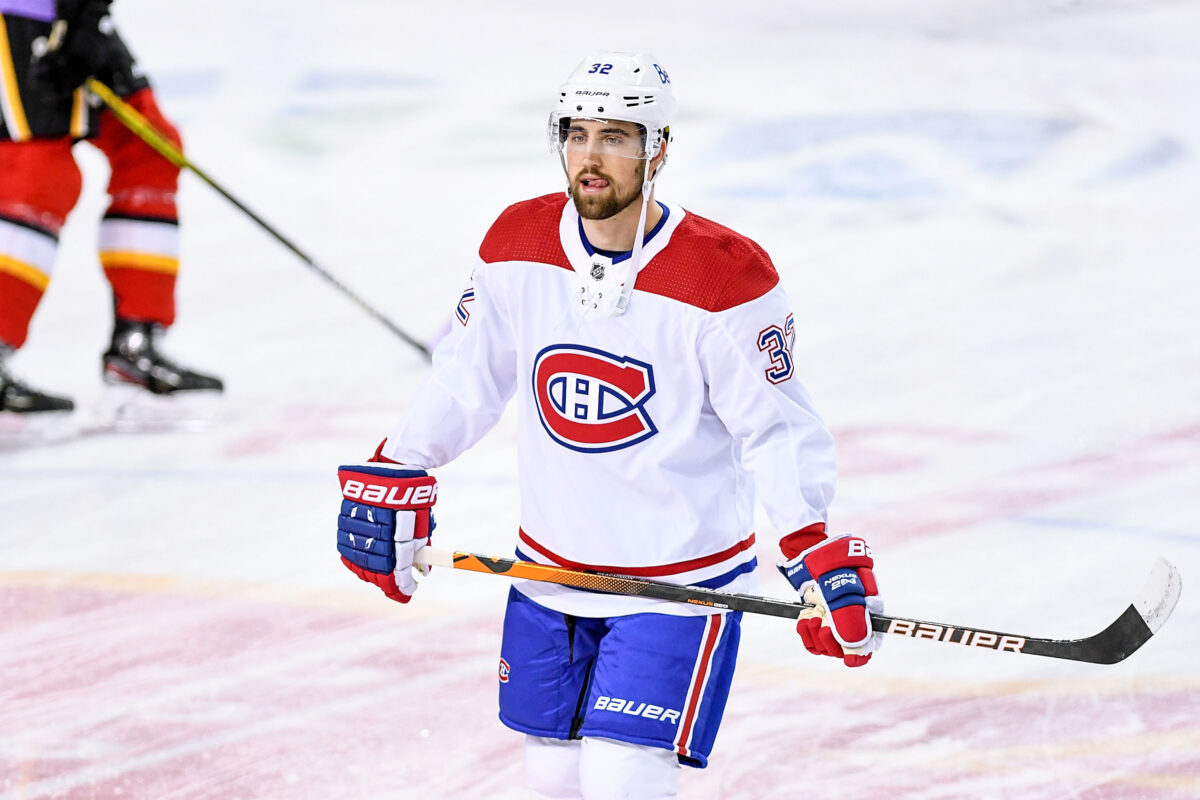Leading up to the NHL trade deadline on April 12, many questions and rumors swirled about what general manager Marc Bergevin would do to help the Montreal Canadiens. Bergevin himself suggested that little could be done as a result of limited cap space. Ultimately, some small deals were completed as he elected to secure the Canadiens’ roster’s defensive depth and added Jon Merrill (Detroit Red Wings) and Erik Gustafsson (Philadelphia Flyers). He gave up little in the process, managing to retain his NHL roster as it was assembled.
Merrill was acquired prior to the deadline on April 11 for a fifth-round draft pick in 2021 and prospect Hayden Verbeek, while Gustafsson was exchanged for a seventh-round pick in 2022, with the Flyers retaining 50% of his salary.

Marc Bergevin, Montreal Canadiens, 2018 NHL Draft, Dallas, TX, June 22, 2018 (Amy Irvin / The Hockey Writers)
These deals generated mixed reactions from many who follow the team closely. The questions regarding these acquisitions were, rightly, general in their scope: do these players improve the team? Where does each player fit? What skills do these players possess? The answers to these questions are where opinions diverged. However, now that Merrill and Gustafsson have played a few games, those theoretical questions can at least be partially answered (albeit from a limited sample size) with empirical observations.
My early first impressions are that both players have essentially come as advertised. They have some notable strengths and weaknesses, but their play appears to be more of a positive scenario for the Canadiens thus far.
Jon Merrill and Stability
Merrill is heralded as a solid stay-at-home defender who effectively suppresses opposition scoring with good positioning and low-risk decision-making. This is his niche in NHL. In his four games with the Canadiens, this description has, for the most part, continued to be accurate, especially given his slightly more sheltered role with the Canadiens.
In his first game – against the Edmonton Oilers – Merrill was placed on the third pair with Alexander Romanov and provided that aforementioned stability. Firstly, his presence allowed Romanov to support the attack more frequently on the offensive side of the puck. In addition, he made several good plays, with poise, in the defensive zone against players such as Connor Mcdavid and Leon Draisaitl. He was calm under pressure and that bodes well for the stretch run.

Jon Merrill, Montreal Canadiens (Photo by Andy Devlin/NHLI via Getty Images)
In Calgary on Friday night, Merrill saw his ice time increase from 11:32 to 17:07 and he handled himself well against a hard forechecking Flames attack. He was hard on the puck and relieved pressure in the defensive zone when the Canadiens were on their heels.
The Flames shellacking of the Canadiens 5-2 on Saturday night was the one hiccup in Merrill’s stint with the Canadiens so far. He finished minus-3 on the night in just 9:43 of ice time. I would argue that this, to some extent, is an example of the plus/minus stat being slightly misleading. On the second Flames goal, Milan Lucic picked up a loose puck off of a won face-off and scored immediately. It is hard to blame the defensemen on that play. On the fourth Flames goal, Merrill did make a suspect breakout pass to Jesperi Kotkaniemi but shortly afterward was clipped by Flames forward Brett Ritchie, clearing space for a Flames odd-man rush.
Merrill bounced back with a solid defensive effort in his fourth game, this time while paired with fellow newcomer Gustafsson. Coach Dominique Ducharme praised the duo’s play saying “They were composed on breakouts. They were making some solid plays defensively. They did a solid job.” We will see if this pair remains together and if they can solidify the team’s bottom pairing.
Erik Gustafsson Affirms Offensive Prowess
Gustafsson’s Canadian quarantine ended shortly after Merrill’s meaning it took a little more time for him to be inserted into the lineup. Known more for his offensive abilities and power-play prowess, Gustafsson was expected to help the team put the puck in the net. However, he is known in some sense for his high-risk high reward style.
Up until this point, he has played three games for the Canadiens, all against the Calgary Flames. In his first game, his ice-time was limited to just 7:12 as the team dressed seven defensemen. He did finish with a plus one on the night, even in the losing effort.
The second game against the Flames was more of an indicator of what Gustafsson can bring, even if once again he was technically a seventh defenseman. His minutes increased to 12:13, he picked up two assists, one on the power-play, and finished the game with five shots on goal. He also finished with a team-best plus one, also in a losing effort.

What impressed me most was how Gustafsson was able to move deceptively at the offensive blue line, which allowed him to get shots through to the net. A good example of this was a point shot that led to Nick Suzuki’s opening goal on Saturday night.
Perhaps more importantly, in his three games for the Canadiens so far, he boasts very strong possession numbers. In analytical terms, his Corsi in those three games was 56.5 percent, meaning when he was on the ice the shot attempts taken by the Canadiens were higher than shot attempts against. Once again, this is a small sample size, but it is for the moment a positive development.
Depth: Positive With Some Downside
It is very hard to argue that defensive depth is a negative for a team most likely heading for the playoffs. The commonly used phrase in hockey is that too much of a good thing is “a good problem to have.” That said, the one glaring issue relates to an extremely obvious point that the team now has eight NHL-caliber defensemen to use in six spots. Brett Kulak, before being put in the press box in place of Merrill, was arguably playing better hockey than most of his peers on the back end during the team’s post-deadline slide. He gave himself as good a chance as any to stay in the lineup but is now on the outside looking in. For a player, that could be a tough pill to swallow. We will see if this affects Kulak’s confidence when he returns to the lineup.
On Monday, valuable rookie Romanov found himself out of the lineup, although this was primarily due to a cap crunch rather than performance. My point here is not to insinuate some sort of major catastrophe will occur. However, if the team remains inconsistent down the stretch, having an abundance of players on defense may increase the coach’s difficulty and decision-making. It will certainly increase the negative talk that tends to hover just above the team at all times. Alternatively, if Merrill and Gustafsson can continue to make impactful strides for the Canadiens on the third defense pair, many will be put at ease.